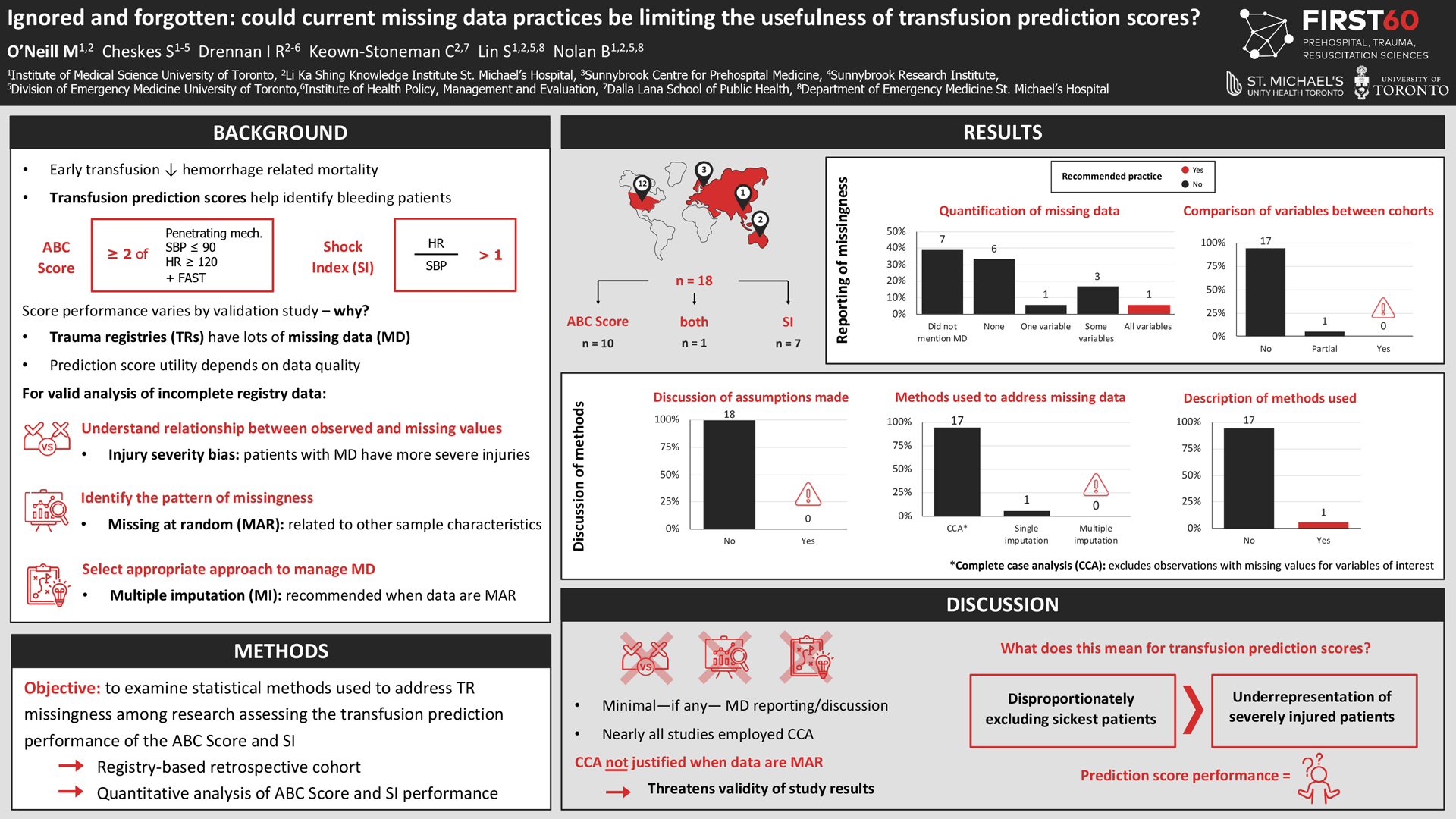 |
|
Ignored and forgotten: could current missing data practices be limiting the usefulness of transfusion prediction scores? Introduction: Early blood transfusion is critical for reducing hemorrhage-related mortality in trauma. Several prediction scores have been developed to improve identification of injured patients requiring transfusions, however, their validity is highly dependent on the completeness of trauma registry data. Objective: To examine the statistical methods used to address trauma registry missingness among research assessing the performance of the ABC score and Shock Index for predicting transfusion need. Methods: We conducted a literature review of primary studies included in a previously published scoping review of predictors of transfusion in trauma. Registry-based retrospective cohort studies that quantitatively analyzed the performance of the ABC Score or Shock Index were included. Guided by recommendations for the conduct and reporting of analysis affected by missing data, we evaluated the extent of each manuscript’s reporting of missingness, and discussion of methods used to manage missing data. Results: Overall, 18 studies published between 2008-2020 were included. Most studies used single-centre registries (n=15; 83%) and were conducted in the USA (n=12; 67%). Ten studies (56%) assessed the ABC Score, seven assessed the Shock Index (39%), and one (6%) assessed the performance of both scores for predicting transfusion need. Among these, 39% (n=7) made no mention of missing data, 34% (n=6) identified that patients with missing data were excluded but did not quantify any missingness, and only one (n=6%) quantified missingness for all variables. Almost all studies (n=17; 94%) failed to compare patient characteristics in cohorts with and without missing data. Methods used to manage missingness were complete case analysis (n=10; 56%) and single imputation (n=1; 6%). Methods were unknown for studies that made no mention data completeness (n=7; 39%). None (n=0; 0%) of the included studies employed multiple imputation. Conclusions: Among trauma registry-based assessments of the ABC score and Shock Index, most studies contained minimal—if any—discussion of missing data. Of the methods used to address missing data, nearly all studies employed complete case analysis, a method known to bias study results. To ensure prediction scores are sufficiently validated before clinical use, missingness must be appropriately addressed to prevent the inappropriate exclusion of patients from study populations. |
Melissa is a PhD candidate in the Institute of Medical Science at University of Toronto with an interest in prehospital trauma care, resuscitation, and hemorrhage management. Under the supervision of Dr. Brodie Nolan at St. Michael's Hospital, her thesis


